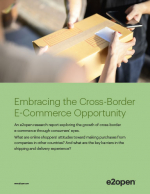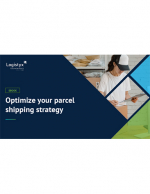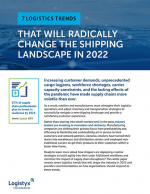The Other Half of Your Net Landed Cost of Goods
This educational paper highlights ways to reduce your net landed cost of goods, by revisiting your company’s CoD costs, find out how you can get better control by focusing on common areas of cost overages.
Cost of Distribution
Companies increasingly focus cost-cutting efforts on Cost of Distribution, and it’s paying off by quickly reducing net landed cost of goods and improving profitability.
Net landed cost of goods, the total cost associated with getting goods into customers’ hands, consists of cost of distribution (CoD) and cost of manufacturing (CoM).
For years, manufacturers and brands have worked to reduce CoM as the means to reducing their net landed cost of goods to compete and succeed in increasingly competitive marketplaces. However, this strategy is reaching its limits, and therefore companies are increasingly turning to the often more rewarding, yet complex, opportunity to reduce CoD.
When a company’s CoD represents a significant portion of its net landed cost of goods, opportunity abounds to reduce overall costs and increase margins.
In fact, some of the world’s top brands are putting order fulfillment and parcel shipping software solutions in place in a matter of days to rapidly reduce their net landed cost of goods and boost shipping efficiencies – without renegotiating carrier rates – by simply relying on technology. The right kind of parcel shipping system enables companies to reduce landed costs in four critical areas:
- Dynamic carrier portfolio management for optimal rate and service selection
- Carrier-compliant processing that prevents fines due to shipping errors
- Labor savings by eliminating manual, labor-intensive processes
- Visibility to audit shipping history and recoup incorrect delivery charges
For businesses with large parcel shipment volumes, the importance of these outcomes cannot be understated. In a recent study by F. Curtis Barry & Company, the cost of shipping for these companies is by far the number-one fulfillment expense, often exceeding the sum of wages, benefits, facilities, utilities and supplies.
Profit is directly linked to how much – or how little – they are able to successfully reduce landed costs, making parcel shipping systems with low barriers to entry and easy scalability an attractive ROI for many.
What’s Related




Favorites





